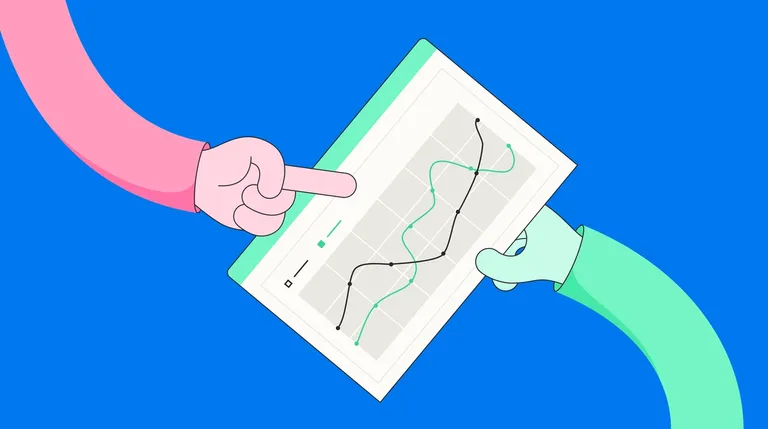Solution Selling: The Essential Sales Guide
Problem-solving is at the core of every business decision. Whether your prospects need to optimize an internal process, cover gaps in the user journey, or improve a product feature, they will show interest in a new product or service only when and if it fills an existing gap.
As a salesperson, the premise sounds simple: showcase how your product fills this gap. But the reality isn't quite as straightforward. In a study of B2B buyers by Gartner, 77% say their latest purchase was either "difficult" or "very complex." As a result, 75% now prefer a rep-free sales experience.
Solution selling can make your sales journey smoother and more positive. By shifting the spotlight from what you have to offer to what your prospects have to gain, you make every interaction more meaningful and relevant.
What Does Solution Selling Mean, Exactly?
The solution selling sales methodology focuses on your prospects' needs and pain points. It involves positioning your sales approach so you're not just selling a generic product with various use cases and benefits (and hoping one is relevant to your prospect) but instead offering a clear vision of how the product solves a specific problem. The focus shifts from what you're selling to how it can help your prospect.
The key to the solution selling methodology is a deep understanding of your prospect's needs, followed by tailored guidance and recommendations on how your solution (or even a feature within your broader offering) can help fulfill them.
B2B teams are busy; they don't have time to hear generic claims about how you're the best in the market or sift through a laundry list of irrelevant features. A solution-selling approach can make your sales interactions more effective and engaging by pinpointing where and explaining how your product adds value.

When to Use Solution Selling
There are certain types of customers and instances where solution selling works best and when it doesn’t:
Prospects Aware of Their Problem
Firstly, it's best if your prospect is already aware of their problem and is either actively seeking a solution or open to exploring new avenues to fix it.
Unique Needs That Off-the-Shelf Solutions Can't Address
This sales methodology is useful if your prospect has a unique need that off-the-shelf solutions can't address.
Suppose you're selling software for commercial property management, and your prospect is concerned with weather-related risks. With a solution-selling approach, you can demonstrate how your platform can be customized to include real-time weather data or automated response triggers—directly addressing their needs and setting yourself apart from competitors.
Highly Complex Products with Varied Features
Solution selling is also suitable for highly complex products that offer a varied range of features.
Imagine you are selling an end-to-end cybersecurity solution with advanced threat detection, endpoint protection, and data encryption features. However, your prospect is primarily concerned with data security. By focusing on your data encryption capabilities, you can effectively demonstrate your value without overwhelming the prospect with unnecessary details.
When Solution Selling May Not Work
However, solution selling doesn't work well in all scenarios. For example, if companies aren't aware of their needs, have conflicting priorities, or there is a misalignment between departments, you may struggle to define a specific problem to solve.

What Are the Pros and Cons of Solution Selling?
Innovative sales methodologies don't work in every situation or for every prospect. Therefore, it's essential to consider where solution selling may fall short and where it provides the most value. Here are the most common pros and cons of this methodology:

7 Steps to Effective Solution Selling
1. Do Your Research
The first few interactions with your prospect are crucial for establishing credibility and showing that you care. Before proceeding further in the sales process, research the company, who you may speak with, and recent industry trends that could impact the company's operations or business goals.
While you will likely have various opportunities to ask questions about the prospect and their needs at later stages, first impressions matter, and you must show expertise from the get-go.
2. Build Rapport and Trust
Great salespeople need more than excellent communication skills—they need the ability to empathize and connect with people on a deeper level. To build a deeper rapport and trust with your prospects, approach them with a friendly tone and show interest in learning more about their role, priorities, needs, and goals.
Avoid starting conversations with a sales pitch or boasting about your product on inopportune occasions. Solution selling is all about building strong client relationships and delivering value beyond a product, so your interactions should be human-centered.

3. Ask Insightful Questions
Don't fall into the trap of asking for timelines and budgets before understanding what your prospect is trying to achieve. Book a meeting with your prospect to discuss current challenges and goals, and start with open-ended discovery questions that can reveal their pain points and desired outcomes.
For example, you may want to ask:
- What are your biggest challenges as a business?
- How is this particular challenge affecting day-to-day operations?
- How are you dealing with it right now?
- What would be the key limitations and constraints to be aware of?
- How do you envision the ideal solution to this challenge?
- What experience do you hope to offer users with this solution?
- How would you measure the success of this solution?
4. Identify and Confirm the Problem
At this stage, you can gather with your team, revisit meeting notes and key communications, and identify your prospect's main challenge. You can also map out any barriers your client has faced when tackling this challenge, especially if your product helps break them.
Before spending more time and effort developing personalized materials, confirm with the prospect that your assumptions are accurate and that you are heading in the right direction. Ensuring mutual understanding will help avoid friction in future meetings and prevent planting any seeds of doubt in your prospect's mind.
5. Present a Tailored Solution
Now is the time to let your expert product knowledge shine. Present a tailored solution, showcasing the features and customization capabilities relevant to your prospect's problem. To make your pitch more engaging, create a demo video or deliver a live demo that illustrates, step by step, how your product addresses their unique needs.
Demostack can help you significantly speed up this process and, importantly, improve the quality of your demos. With Demostack, you can quickly personalize demos with new images, text, and even charts and data so that all information is relevant to your prospect's background, needs, and goals.
After the demo, consider sharing other case studies or marketing materials. For example, you could share a webinar tutorial you recently conducted in partnership with a client or a successful client story on your website.
6. Quantify the Value
You are selling a vision, but executives care about numbers, too. That's why you must remind them of the value your product adds. So, what exactly is in it for them? It could be a 20% ROI in upselling and new sales opportunities, time savings, and team efficiency, or the potential to reach an entirely new market.
The key is to focus on the impacts your prospect cares about the most. Using Demostack for your interactive and personalized demos, you can get real-time engagement analytics showing what features and messaging resonated with your prospect the most. This is invaluable information to build a strong case for your product.
7. Follow Up Strategically
B2B sales cycles are notoriously long, so your salespeople are likely used to waiting for responses. But staying silent isn't a strategy. Keep communication alive by reaching out to your prospect at a reasonable frequency. While it isn't a magic formula, the 3x3x3 method (following up three times, with three days between each follow-up and using three different channels) is widely used.
Beyond the frequency of communications, you should review the quality and relevance of every interaction, such as your product demos. You can leverage Demostack's demo analytics to tailor your follow-ups to be as effective as possible, addressing any concerns and building trust in your product.
Lastly, ensure your efforts are aligned with your marketing team so they can tailor their email marketing campaigns to convey the right message at the right time.

Show, Don’t Tell: How Sales Demos Help Seal The Deal
B2B buyers aren't interested in what you offer unless it benefits them and solves their problems. That's why solution selling is as effective now as in 1975 when it was first introduced. Successful solution selling requires both in-depth product knowledge and the right sales tools.
A robust sales enablement platform like Demostack helps you bring the solution you're selling to life with interactive and personalized demos. Your sales teams can embed prospect details like company name, revenue, and pain points to spin up fresh, personalized demos in seconds.
Plus, you can provide a customized sandbox environment that features your most relevant capabilities so your prospect can try them out. Instead of having your engineering team waste precious time altering these environments, the platform lets your sales team do this easily and quickly for every new prospect.
Book a demo today to see how Demostack helps you focus on what really matters to your customers—and seal the deal faster.





